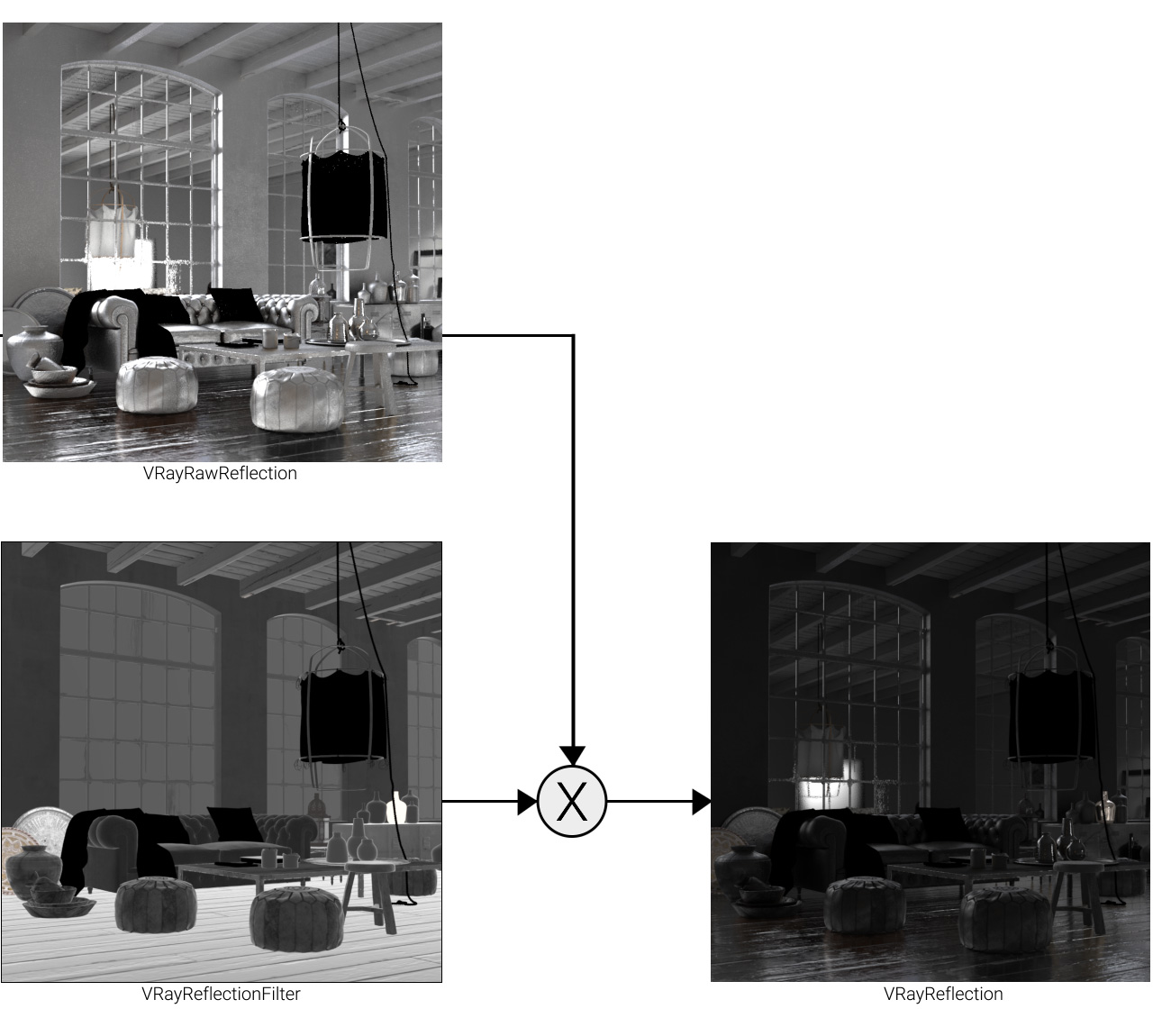VRayRawReflection
This page gives some basic details about the Raw Reflection render element and how it is used in compositing.
Overview
The Raw Reflection Render Element stores reflection information calculated from the materials' reflection values in the scene. Surfaces with no reflection values set in their materials will contain no information in the render element, which means these areas will render as black. When the Raw Reflection Render Element is multiplied by the Reflection Filter (VRayReflectionFilter), the Reflection (VRayReflection) Render Element is produced.
VRayRawReflection gives the full reflection of objects reflecting in the scene, while the reflection filter VRayReflectionFilter sets how much of that reflection should come through in the composite. In other words, the filter defines the strength of the reflection, while the raw image defines what is being reflected in the image. When these two elements are multiplied, the true level of reflection is given as the VRayReflection Render Element. By using these component parts of the reflection, you can fine-tune the reflection in your final composite.

UI Path:
||Render Setup window|| > Render Elements tab > Add button > VRayRawReflection
Parameters
This render element is enabled through the Render Elements tab of the Render Setup window in 3ds Max and displays its parameters in a rollout at the bottom of the window:
vrayVFB – Enables the render element inside the V-Ray frame buffer.
deep output – Specifies whether to include this render element in deep images.
color mapping – Applies the color mapping options specified in the Color mapping rollout of the V-Ray tab in the Render Setup window to this render element. This option is enabled by default.
multiplier – Sets the overall intensity of the render element, where 1.0 is the standard multiplier.
denoise – Specifies whether to denoise this render element.
Common Uses
The Raw Reflection Render Element is useful for changing the appearance of reflective scene elements in compositing or image editing software after the scene is rendered. Below are a couple of examples of its use.

Reflection Render Element

Original Beauty Composite

Brightened reflections

Warmed and raised reflections
